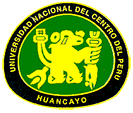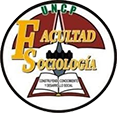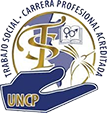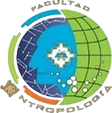Ability to assess the credibility of news in students of social communication at a University of Peru
DOI:
https://doi.org/10.26490/uncp.sl.2021.5.1.743Keywords:
Information Literacy, Social Communication, Fake News, CRAAP test.Abstract
The objective of this research was to evaluate the capacity of the students of social communication of the Universidad Nacional Mayor de San Marcos to evaluate the credibility of news; likewise, as a specific objective it is to evaluate their capacity by means of the variable sex, level of study and specialty of the career. About the method, it was of quantitative cut, descriptive reach, non-experimental design and of transversal type, two news were used for the investigation, one false and other real. The CRAAP test was used as an instrument for data collection, which has criteria related to the analysis of information. In the results, it was obtained that the students' capacity to identify news is regularly acceptable (47.5%), the average was higher in true news (33.49) than in false news (28.82); differences were found in the averages according to sex (female 31.69 and male 30.57, level of studies (basic 29.27, intermediate 30.37, advanced 32.09), according to studies with specialty (31.57) and general studies (29.27). In conclusion, students of social communication present regularly acceptable capacity to evaluate the credibility of the news, being able to differentiate a true news from a false one, but they present complications during the process.
References
ACRL. (2016). Framework for Information Literacy for Higher Education.
http://www.ala.org/acrl/sites/ala.org.acrl/files/content/issues/infolit/framework
Allcott, H. y Gentzkow, M. (2017). Social media and fake news in the 2016 election.
Journal of Economic Perspectives, 31 (2), 211 – 236.
https://doi.org/10.1257/jep.31.2.211
Auberry, K. (2018). Increasing students Ability to identify fake news through information
literacy education and content management systems. Reference Librarian, 59(4),
– 187. https://doi.org/10.1080/02763877.2018.1489935
Batchelor, O. (2017). Getting out the Truth: The Role of Libraries in the Fight against Fake
News. References Services Review, 45(2), 143 – 148.
https://doi.org/10.1108/RSR-03-2017-0006
Blakeslee, S. (2004). The CRAAP Test. Loex Quaterly, 31(3), 6 -7.
Bovet, A. y Makse, H. (2019). Influence of Fake news in Twitter during the 2016 US
presidential electicon. Nature Communications, 1(10), 1 – 14.
https://doi.org/10.1038/s41467-018-07761-2
Buckingham, D. (2019). Teaching media in a ‘post-truth’ age: fake news, media bias and
the challenge for media/digital literacy education / La enseñanza mediática en la
era de la posverdad: fake news, sesgo mediático y el reto para la educación en
materia de alfabetización mediática y digital. Cultura y Educación, 31 (2), 213-
https://doi.org/10.1080/11356405.2019.1603814
Burkhardt, J. (2017). Combating Fake News in the Digital age. American Library
Association.
Castells, M. (2006). La era de la información: Economía, sociedad y Cultura: Volumen III.
Siglo XXI Editores.
CILIP. (2018). CILIP Definition of Information Literacy 2018.
https://infolit.org.uk/ILdefinitionCILIP2018.pdf
De Paor, S. y Heravi, B. (2020). Information literacy and fake news: How the field of
librarianship can help combat the epidemic of fake news. The Journal of
Academic Librarianship, 46 (5), 1- 8.
https://doi.org/10.1016/j.acalib.2020.102218
El Rayess, M. et al. (2017). Fake news judgement: the case of undergraduate students at
Notre Dame University -Louaize, Lebanon. Reference Service Review, 46(1), 146-
https://doi.org/10.1108/RSR-07-2017-0027
Egelhofer, J. y Lecheler, S. (2019). Fake news as a two – dimensional phenomenon: a
framework and research agenda, Annals of the International Communication
Association, 43 (2), 97- 116. https://doi.org/10.1080/23808985.2019.1602782
Estrada Cuzcano, A., Alfaro Mendinez, K. y Saavedra-Vásquez, V. (2020). Disinformation y
misinformation, posverdad y fake news: precisiones conceptuales, diferencias,
similitudes y yuxtaposiciones. Información, cultura y sociedad, (42), 93-106.
https://doi.org/10.34096/ics.i42.7427
Hernández Sampieri, R., Fernández Collado, C. y Baptista Lucio, P. (2014). Metodología de
la investigación. McGraw W-Hill/ Interamericana Editores
Herrera Aguilar, M. et al. (2015). La alfabetización informacional y la alfabetización digital
en estudiantes de Comunicación: El caso de la Universidad Autónoma de
Querétaro. En S. Rivera Magos (Ed), Claves para la comprensión de la cultura
digital (pp. 11- 41). Fondo Editorial de la Universidad Autónoma de Querétaro.
Herrero Diz, P. et al. (2019). The credibility of online news: an evaluation of the
information by university students / La credibilidad de las noticias en Internet:
una evaluación de la información por estudiantes universitarios. Cultura y
Educación, 31 (2), 407-435. https://doi.org/10.1080/11356405.2019.1601937
Ireton, C. (2018). Truth, Trust and Journalism: why it matters. En Irecton, C; Posetti, J.
(Ed), Journalism, Fake news and disiformation (pg. 32- 42). UNESCO Series on
Journalism Education
Jones- Jang, Sm. et al. (2019). Does media literacy help identification of fake news?
Information literacy helps, but other literacies Don’t. American Behavioral
Scientist, 1- 18. https://doi.org/10.1177/0002764219869406
Koltay, T. (2011). The media and the literacies: Media literacy, information literacy,
digital literacy. Media, Culture and Society, 33 (2), 211-221.
http://doi.org/10.1177/0163443710393382
Lazer, J; et al (2018). The science of fake news. Science, 359 (6380), pg.1094 -1096. Doi:
1126/science. aao2998
Lee, A; So, C. (2014). Alfabetización mediática y alfabetización informacional:
similitudes y diferencias. Comunicar, 21 (42), 137 - 146.doi:
http://dx.doi.org/10.3916/C42-2014-13
Leeder, C. (2019). How college students evaluate and share “fake news” stories. Library
and Information Science Research, 41 (3), 1-11.
https://doi.org/10.1016/j.lisr.2019.100967
Lim, S. (2020). Academic library guides for tackling fake news: A content analysis. The
Journal of Academic Librarianship, 46 (1), 1- 11.
https://doi.org/10.1016/j.acalib.2020.102195
Madianou, M. (2009). Audience Reception and News in Everyday Life. En Wahl -
Jorgensen, K; Hanitzsch,T, (Ed), The Handbook of Journalism Studies (325 - 340).
Routledge.
Moreira, M. (2010). ¿Por qué formar en competencias en la educación superior? En
Moreira, A (Ed), Competencias informacionales y digitales en educación superior,
-5. Editorial de la Universitat Obertura de Catalunya.
Musgrove, A. et al. (2018). Real or fake? Resources for teaching college students how to
identify fake news. College and Undergraduate Libraries, 25 (3), 243-260.
https://doi.org/10.1080/10691316.2018.1480444
Negi, U. (2018). Fake News and Information Literacy: A Case Study of Doon University,
Dehradun. International Research: Journal of Library & Information Science, 8 (2),
- 214.
Otzen,T. y Manterola, C. (2017). Técnicas de muestreo sobre una población a estudio.
International Journal of Morphology 35(1), 227-232.
http://www.intjmorphol.com/wp-content/uploads/2017/04/art_37_351.pdf
Parra Valero, P. y Oliveira, L. (2018). Fake news. Una revisión sistemática de la literatura.
Observatorio, 12 (número especial), 54-78.
https://doi.org/10.15847/obsOBS12520181374
Redacción BBC. (12 de junio de 2015). La falsa lista de apellidos y los verdaderos
requisitos para que los sefardíes accedan a la nacionalidad española. BBC News.
https://www.bbc.com/mundo/noticias/2015/06/150612_sefardies_judios_espa
na_expulsion_nacionalidad_amv
Romero Rodríguez, L. et al. (2016a). Analfautas y la cuarta pantalla: ausencia de
infodietas y de competencias mediáticas e informacionales en jóvenes
universitarios latinoamericanos. Fonseca-Journal of Communication, 1 (12), 11-
http://dx.doi.org/10.14201/fjc2016121125
Romero Rodríguez, L y Aguedad, I. (2016). Consumo informativo y competencias digitales
de estudiantes de periodismo de Colombia, Perú y Venezuela. Convergencia, 23
(70), 35-57. https://doi.org/10.29101/crcs.v23i70.3806
Downloads
Published
Issue
Section
License
Copyright (c) 2021 Fabrizio Peceros García, Mauro Rafaele de la Cruz

This work is licensed under a Creative Commons Attribution 4.0 International License.



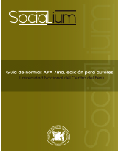




.jpg)










